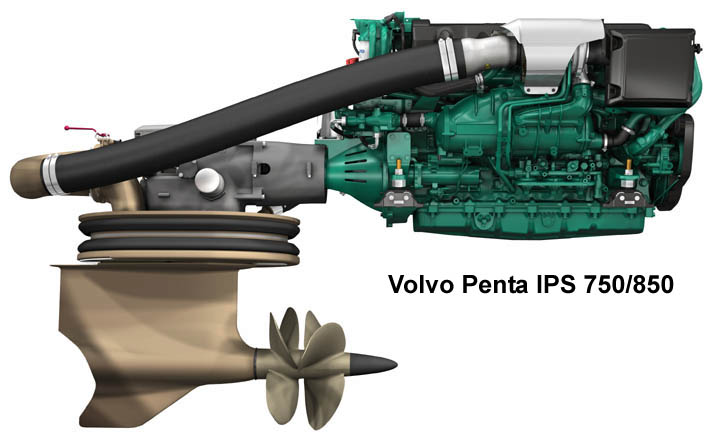Volvo’s Inboard Performance System; in short IPS. Introduced in 2005 this pod drive systems had ruled the boating industry eversince.
The forward-facing, twin counter-rotating propellers and individually steerable pods have been installed in hundreds of boat models worldwide. The benefits when comparing to inboard shafts are:
- 40% longer cruising range
- 20% higher top speed
- 30% reduced fuel consumption
- 30% less CO2 emissions
- 50% lower perceived noise
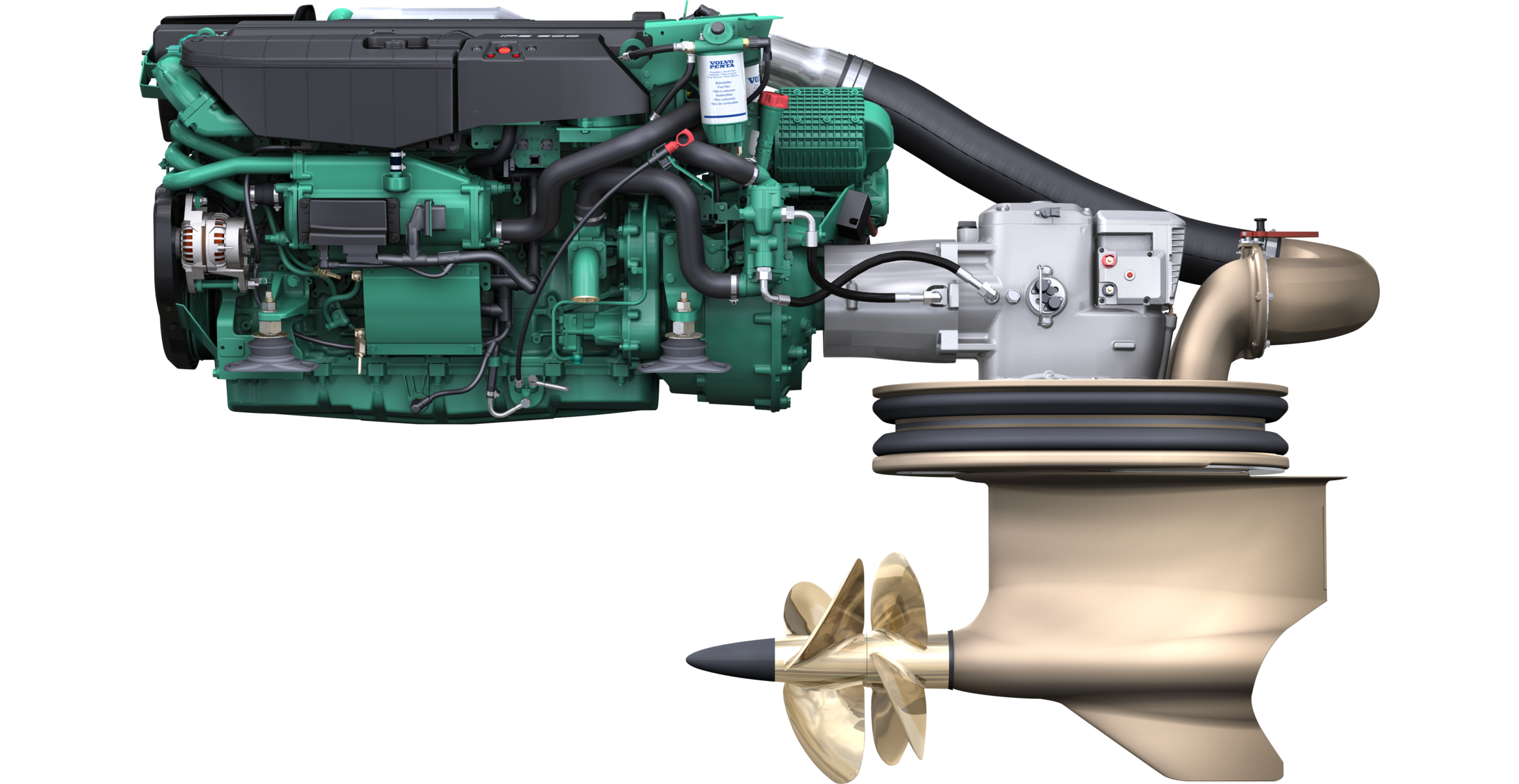
The system contains a “normal” Volvo diesel engine, coupled by a driveshaft to the IPS pod. This pod is mounted on two very large rubber O rings which illiminates vibrations to the hull of the yacht.
Exhaust and coolingwater will also enter and leave via the pod, so easy to install and easy to maintenance.
Lets have a look at the Volvo Penta IPS system with this video:
The power of the engine is transferred by the pod to the twin counter rotating and forward facing props. The main advantache of the forward facing props is simple: they can rotate in undisturbed water so they are far more effective then a normal set-up, shaftdrive or sterndrive. Non IPS users are affraid that the props are very vulnerable for hitting objects under water but in real live it hardly will happen.
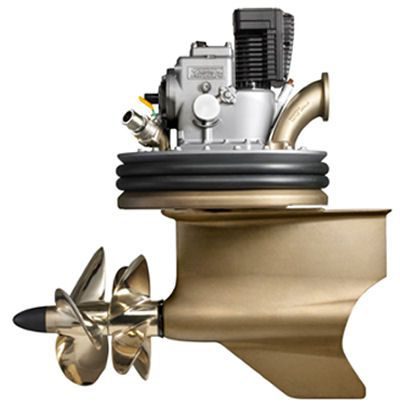
If an IPS powered yacht runs aground of hits something big underwater the complete IPS drive will break on a dedicated point and the yacht will not sink, this is a special safety feature from Volvo IPS.
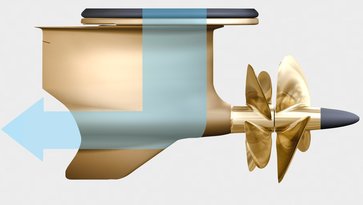
Exhaust fumes are emitted through the pods so with Volvo IPS there is virtually no smoke and less noise then a normal exhaust system.
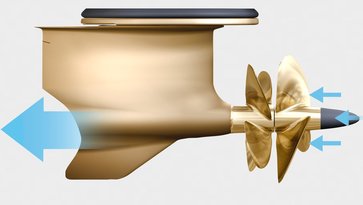
The well proven twin, counter-rotating propellers face forward and work in undisturbed water which gives up to 30% less fuel consumption.
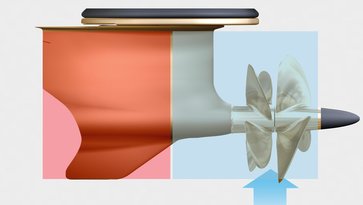
The propeller thrust is parallel with the hull and there is less cavitation then a normal setup with shaftdrive.
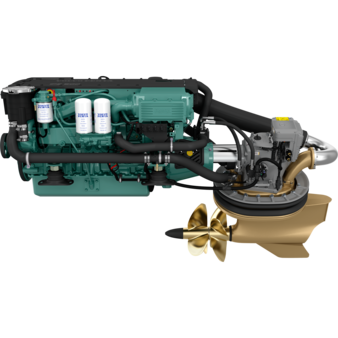
The Volvo IPS program contains the IPS500 with 370hp D6 diesel up to the mighty IPS1350 which uses the D13-1000hp engine. The amazing Azimut 77S has three of this units, pushing this yacht up to 35 knots!
The latest IPS series is the IPS800 with the all new Volvo D8 commonrail engine with 600hp, as used in the Azimut Atlantis 51. The Azimut S6 used three IPS700 units with engines with 550hp each.
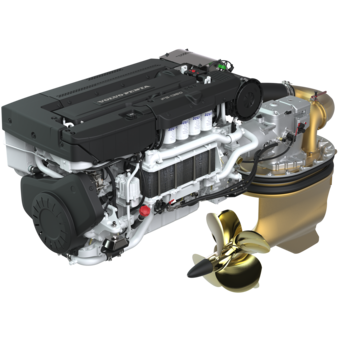
So why are some people still not convinced about using Volvo IPS? First thing what comes to mind is maintenance. Everyone has heard the horror stories about poor maintained IPS drives which needed a lot of attention to put them back in order. So: good maintenance is a must with Volvo IPS but be honest, every propulsion system needs maintenance to perform at their best.
With IPS you need to check the drive oil regularly, this is essential! The counter rotating prop shafts have oil seals and they can start leaking: if this occurs you will see the gear oil become white/milky and this need to be fixed at once. So checking the drive oil should be a normal thing and if something is wrong, we can act right a way before any harm is done. Once a year: remove the props, clean the shafts and inspect the seals. It’s not more then that.
The second item are the anodes: we need to check the anodes regularly as well: electrolysis can be a problem with all metal parts underwater but Volvo has bronze IPS pods and NiBral props and its own dedicated anodes.
Last thing we always hear from the IPS-haters is the vulnerability of the forward facing props and the drives under the yacht but as we have seen in the movie from Volvo, if something really goes wrong, the complete unit will break and the yacht will not sink.
All this brings you less fuelconsumption and all the benefits of Volvo IPS.
